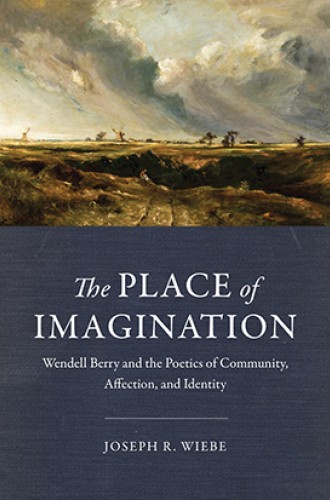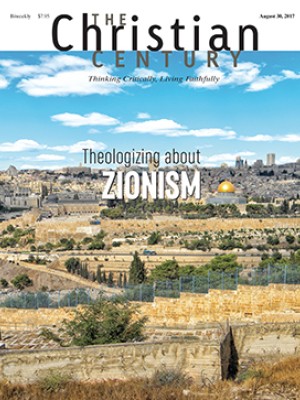Are Wendell Berry's Port William stories about racism?
According to Joseph Wiebe, Berry's vision of rural life starts with his reckoning with Kentucky, the Shawnee, and black slavery.
American food culture is saturated with all things organic, farm-to-table, composted, eco-friendly, and local. From the growth of community-supported agriculture to the rise in the popularity of homesteading, a new surge of Americans have “discovered” the joys and simplicity of rural life by living closer to the ground. In many ways, these inspired folks are trying to reproduce the vision of Wendell Berry, who has long been revered for his critiques of industrial agriculture and his enticing call back to rural towns, farmland, and dirt.
But for those eager to imitate Berry through land-based practices, Joseph R. Wiebe offers a caution. Wiebe, who teaches religion and ecology at the University of Alberta, argues that Berry’s fiction, particularly the Port William stories, reveals that learning to belong to a place is a process that requires the work of imagination and affection. The goods of rural life, according to Wiebe, are good only insofar as they “participate in a healthy social imagination of the place in which they are performed.” Imagination, more than technique or tradition, is the formative capacity that most influences human action and communal life. More than advocating for a new system of local agricultural practice, Berry’s writing reveals his struggle to reckon with the inextricable link between land and people, particularly as that struggle is enacted through his family’s involvement in the legacy of racism.
Read our latest issue or browse back issues.
For Wiebe, the ultimate value of Berry’s fiction is its poetics—its ability to re-form human life through the work of the imagination. “The work of imagination is a work of self-interrogation,” not a head-in-the-clouds escapism. Imagination asks that we see a thing for what it is and, in so doing, acknowledge the claim the thing makes upon us. This work of self-interrogation begins, for Berry, in the return to his native Kentucky, which compels him to reckon with the ways he and his family violated the relationship of land, place, and people by the forcible removal of the Shawnee people and the enslavement of African Americans who worked the stolen land. “Berry’s racial concerns are central to his agrarianism.”
Put another way, if one hopes to understand Berry’s vision of rural life, one must start with his reckoning with racism as it was enacted in agrarian life. In The Hidden Wound, Berry imagines how two black farmworkers inhabited his family’s land which they were excluded from owning. Land is an ethical space. Upon it, communities can either continue to displace others, disrupting union of earth and people, or work together as fellow human beings in desire and affection.
The solution to disrupted communities is work, but this work is not done in the name of upward mobility. Rather, work is cultivated in a culture of belonging and mutual dependence. In this way, Wiebe (via Berry) calls out whites’ tendency to blame communities of color for their lack of progress as a problem of laziness. It is a distinctly white privilege to have access to growing land, wealth, and health.
Wiebe argues that Berry’s vision of affection-rooted work does not ignore the need for substantive structural changes in a fundamentally racist society. Wiebe places Berry alongside scholars like Cornel West, Willie Jennings, and Michelle Alexander, who advocate for ethics of care, love, and compassion to inspire structural societal change. In painstakingly precise terms, Wiebe lays out what structural racism looks like in place: “Nonwhites in America have known that it is commonplace to define people based on where they live. Section 8 housing, public housing projects, urban ghettos, and suburbs have been designed through various political programs that segregate and exploit.” Wiebe goes so far as to suggest that reparations may be the justified response to the systemic manipulation and disenfranchisement of communities of color.
It is precisely in this context of systemic racism, white upward mobility, and reparations as it affects land and place that Wiebe locates Berry’s insights on imagination and affection. According to Wiebe, Berry works out this racial legacy by narrating the lives of community members who have been alienated and marginalized.
It is noteworthy that the alienated characters Berry creates are not African American. Wiebe surmises that this is in part because Berry is loath to oversimplify black lives and disrespect their experiences. And those are fair points—Berry writes what he knows most intimately.
But much of the momentum gained in the first part of the book is lost in the second half when Wiebe begins his analysis of the Port William stories. Because Berry writes what he knows—mostly white men and women struggling to find fidelity in their rural homes—his racial concerns become obscured. Though Wiebe masterfully demonstrates the transformative imagination that Berry embodies in the Port William stories, I was left questioning just how central Berry’s racial concerns are. In the three Port William stories Wiebe analyzes, racial concerns are almost non-existent. Yet Wiebe’s own analysis of systemic racism in place demonstrates how white people can write with precision about racism in ways that aren’t reductive or disrespectful. Wiebe exemplifies theological and literary reflection in a new key, analyzing his and Berry’s work against the legacy of racism.
Wiebe’s book is cathartic for those who recognize the grave injustices still present for communities of color in contemporary land-based visions of communal life. The problems of modern agrarianism aren’t simply a matter of detachment from the land. They are more deeply rooted in the violent detachment of Native American and African people from their lands. Composting, gardening, and homesteading are good only if they are accompanied with the work of affection for our neighbor. For Wiebe, this requires that we reach into deepest parts of our imagination to enact just and flourishing communities. The return to the land is ultimately a return to people.
A version of this article appears in the August 30 print edition under the title “Racism in Port William.”






